All across the park system, scientists, rangers, and interpreters are engaged in the important work of studying, protecting, and sharing our rich fossil heritage. Park Paleontology news provides a close up look at the important work of caring for these irreplaceable resources.
- Contribute to Park Paleontology News by contacting the newsletter editor
- Learn more about Fossils & Paleontology
- Celebrate National Fossil Day with events across the nation
-
Colorado National Monument
Article 1: Maintaining the Past: The Role of Facilities Staff in Paleontological Resource Management at Colorado National Monument
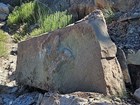
At Colorado National Monument in west-central Colorado, Facilities staff frequently need to deal with rocks that fall from roadcuts onto or next to the roads. These rocks sometimes contain significant fossils such as reptile tracks. Protecting and preserving these fossils has relied on the skills, abilities, and quick thinking of Facilities staff. Read more
-
Article 2: Tertiary Fossil Floras of Alaskan National Parks
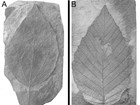
The National Park Service units of Alaska have an outstanding fossil record, including fossil plants. Six Alaskan NPS units preserve notable plant fossils of Tertiary age (Paleocene through Pliocene Epochs, 66 to 2.58 million years ago). These fossils were first documented in 1869 and show a major change going from the Eocene to the Oligocene about 34 million years ago. Read more
-
Big Cypress National Preserve
Article 3: A Glimpse into The Pleistocene Paleoecosystem of Big Cypress National Preserve
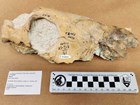
In the late 1960s and early 1970s, work on a proposed jetport within what would become Big Cypress National Preserve serendipitously brought the Jet Age in contact with the Ice Age. A small collection of Pleistocene fossils including bones of mammoths, camels, and horses was uncovered in a buried river channel. These fossils, largely overlooked since then, have now been documented in the collections of the Florida Museum of Natural History. Read more
-
Article 4: Paleontology of Ashfall Fossil Beds National Natural Landmark
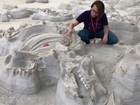
Ashfall Fossil Beds National Natural Landmark in northeastern Nebraska is the site of a bonebed dating to just after 12 million years ago, when an enormous volcanic eruption blanketed the area with ash and led to the death and preservation of hundreds of animals in a waterhole. Exceptionally well-preserved and articulated skeletons of rhinos, horses, camels, birds, and others have been found here since study began in the 1970s. Read more
-
Petrified Forest National Park
Article 5: Sister Parks: Triassic reflections across the Equator at Petrified Forest and Ischigualasto
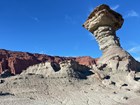
The Triassic Period was a time of great evolutionary experimentation. Two of the locations with the most significant Triassic fossil records, Petrified Forest National Park in Arizona of the U.S. and Ischigualasto Provincial Park in San Juan Province, Argentina, are nationally protected. Representatives of the two parks and their countries have come together to establish a sister park arrangement to further collaboration. Read more
-
Badlands National Park
Article 6: The Season of Fossils and Firsts for NPCA!
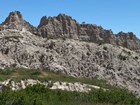
The National Parks Conservation Association (NPCA) is a non-profit advocacy organization that works to protect the National Park System. In 2023 Christa Cherava, NPCA Senior Manager of Conservation Programs, has been looking at the question of why paleontological resources should be protected, from a variety of perspectives outside and inside of paleontology. Read more
-
Mojave National Preserve
Article 7: Mojave National Preserve Paleontological Resource Inventory
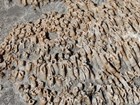
Mojave National Preserve in the Mojave Desert of southeastern California holds a lengthy paleontological record spanning more than 550 million years. A paleontological resource inventory has recently been published for the preserve, documenting this history. Some highlights from the Cambrian, middle Paleozoic, and Miocene are presented here. Read more
-
Zion National Park
Article 8: New Navajo Sandstone-Themed Electric Shuttle Bus Transports Visitors Back in Time at Zion National Park
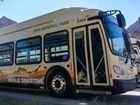
Zion National Park is converting its bus fleet to electric vehicles, and each new bus will have a distinct visual theme. One of the themes is the life of the Navajo Sandstone, a rock formation that makes up many iconic landforms at the park. The artwork, created by paleoartist Brian Engh, includes dinosaurs and other animals that left tracks and burrows in the sand, as well as plants. Read more
